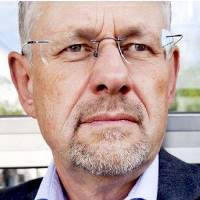
Danijela Cabric
Associate Professor and Area Director,
Circuits & Embedded Systems
Danijela Cabric is Professor in the Electrical and Computer Engineering Department at the University of California, Los Angeles. Her research interests include novel radio architectures, signal processing, communications, machine learning and networking techniques for cognitive radio, 5G and massive MIMO systems. Dr. Cabric received the Samueli Fellowship in 2008, the Okawa Foundation Research Grant in 2009, Hellman Fellowship in 2012 and the National Science Foundation Faculty Early Career Development (CAREER) Award in 2012. She served as an Associate Editor in IEEE Journal on Selected Areas in Communications (Cognitive Radio series) and IEEE Communications Letters, and TPC Co-Chair of 8th International Conference on Cognitive Radio Oriented Wireless Networks (CROWNCOM) 2013. She is now an Associate Editor of IEEE Transactions of Cognitive Communications and Networking. She is a Senior Member of IEEE and ComSoc Distinguished Lecturer.
Revisiting Spectrum Sharing Techniques for Unlicensed Massive IoT
Massive Internet-of-Things (IoT) communications aim to provide connectivity to sensors and machines at a very large scale. Many technologies have emerged to realize massive IoT applications, with most of them using unlicensed spectrum due to its cost-effectiveness. Nevertheless, unlicensed access elevates the need for spectrum sharing techniques for fair coexistence with incumbent networks. More critical to the massive IoT market is the need for connecting a massive number of low-cost devices, which requires identifying many narrow band channels at a fine spectral resolution and then reusing these channels aggressively over space. In this talk, we will first overview recent unlicensed-based solutions for IoT that have different levels of spectrum cognition. Specifically, we will begin with networks that avoid spectrum sensing by transmitting extremely narrow band signals, of few hundred Hz, and show that these networks can support tens of thousands of devices, yet they are limited to extremely low-rate applications. To support higher rates, sensing-based solutions are required, yet existing ones, e.g., MulteFire, rely on simple listen-before-talk protocols with energy-based sensing. Such networks cannot support a massive number of devices as they do not finely identify and use spatio-spectral resources. To this end, we present an approach that uses distributed wideband spectrum sensing, with low-cost spectrum scanners, that achieves a fair coexistence with incumbents, identifies fine resolution spatio-spectral blocks, and supports a wider range of applications with different rate requirements and number of devices. At the end, we will discuss future research directions for massive IoT communications over the unlicensed spectrum.

Jens Zander
Professor at KTH – The Royal Institute of Technology
Stockholm, Sweden
Co-founder and long-time director of Wireless@KTH, the Center for Wireless Systems at KTH. He belongs to the Radio Communication Systems lab which he has led since 1989. The lab is now part of the the department of Communication Systems. From January 1st 2018, he is Head of the School of Electrical Engineering and Computer Science (EECS) at KTH.
Spectrum Challenges for Wireless Indoor Networks beyond the Ultra-Dense Barrier
It has become increasingly clear that the current design paradigm for mobile broadband systems is not a scalable and economically feasible way to solve the expected future “capacity crunch”, in particular in indoor locations with large user densities. To approach this problem we need to solve the techno-economic problem to find both business models, spectrum options and scalable technical solutions that provide extreme area capacity for a given cost and energy consumption. To reach very high capacity we must venture beyond the “ultra-dense barrier”, i.e. consider networks where the number of access points in an area is (considerably) larger than the active number mobile terminals. In such networks, area capacities of more than 1 Gbit/s/m2 are perfectly feasible. The problem set encountered in such Ultra-Dense Networks (UDN) is very different from conventional cellular systems and their solution requires conceptually new tools. In the talk we will address some of the fundamental aspects and performance limits, modeling of propagation, deployment and user traffic, and discuss the techno-economics of various network architectures with special emphasis on the spectrum issues.

Haris Gacanin
Department Head at
Nokia Bell Labs
Leading multi-disciplinary department of AI-driven communications systems. He is IEEE Senior member, IEICE Senior member, 2013 Alcatel-Lucent Award of Excellence. He is experienced in leading industry research laboratory with emphasis on innovation – proficient in IP portfolio management (70+ patents and 100+ journal and conference publications.)
Artificial Intelligence Paradigms for Designing Wireless Systems
Today, network management is mainly reactive to enable corrective actions only when a problem has already occurred and detected by network counters or customer complaints. We envision truly autonomous future networks that exploit artificial intelligence (AI) to manage and optimize its performance in autonomous fashion. This talk explores challenges and future research directions related to AI-driven network automation. We start from challenges and requirements toward network self-organization (i.e., complex system-of-systems). We then discuss principles of AI agent design, perception, reasoning, learning. Finally, we end with an example of case study with real-life AI prototype implementation using commodity Wi-Fi access points. The talk provokes new coming challenges and unveil necessary future directions across multi-disciplinary research areas.

Domenico GIUSTINIANO
Research Associate Professor
at IMDEA Networks
Dr. Domenico Giustiniano is Research Associate Professor (tenured) at IMDEA Networks Institute and leader of the Pervasive Wireless Systems group. Before joining IMDEA, he was a Senior Researcher and Lecturer at ETH Zurich. He also worked for a total of four years as Post-Doctoral Researcher in industrial research labs (Disney Research Zurich and Telefonica Research Barcelona). He holds a PhD in Telecommunication Engineering from the University of Rome Tor Vergata (2008).

